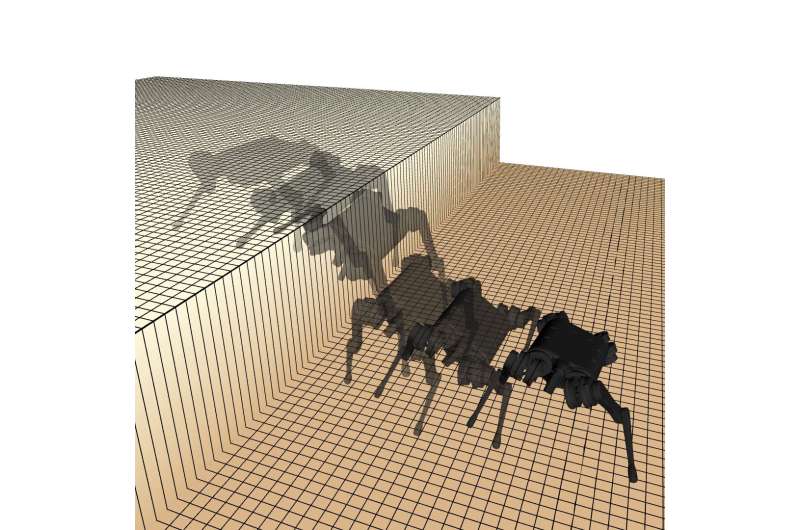A robot with a tail and proprioception can be deployed in real-world settings, including rugged terrains like rocky hills and curbs, which may pose significant challenges.

Several animal species, such as cats and other felines, tend to walk in their own footprints, which helps them establish a sense of stability and balance on various types of terrain. Humans and animals possess natural proprioception, while most robots use vision systems to perceive their surroundings.
Researchers at Carnegie Mellon University’s Robomechanics Lab presented two techniques to enhance legged robots’ movement on rough terrains. Instead of external sensors like cameras and lidar, the researchers suggested using internal sensors like motors, encoders and inertial measurement devices. It assists the robot in identifying slips and falls and adjusting its motion to prevent toppling over.
The proposed model allows robots to control an artificial tail, imitating animals’ tail movements during navigation. It helps to detect slips or falls and adjusts to avoid tipping. The researchers’ team developed a system enabling a legged robot’s tail to synchronize with its legs, boosting balance when some portions are off the ground. It helps with navigation on rough terrain and enhances efficiency in confined areas. A series of simulations show that bio-inspired proprioception and tail control reduced slips/falls and enhanced movement in challenging terrains.
Real-legged robots could use these planning methods to navigate challenging environments more reliably, reducing falls and collisions. It would improve their capacity to perform tasks such as search and rescue and environmental monitoring on uneven terrains. Accurately estimating state and contact information is crucial for the robot’s proprioception and control, making testing the proposed model on the actual hardware challenging. The researchers aim to refine their framework for modeling and controlling robot tails to decrease collisions with the robot’s body or environment in future work.
Extending the method to more complex terrains like narrow ravines or stepping stones is an area of improvement. The current approach assumes simple terrains, but robot legs may trip or hang on tougher ones. The controller lowers the robot’s body for stability, but adding more events to the gait planning process could improve it.
Reference : Yanhao Yang et al, Proprioception and Tail Control Enable Extreme Terrain Traversal by Quadruped Robots, arXiv (2023). DOI: 10.48550/arxiv.2303.04781








